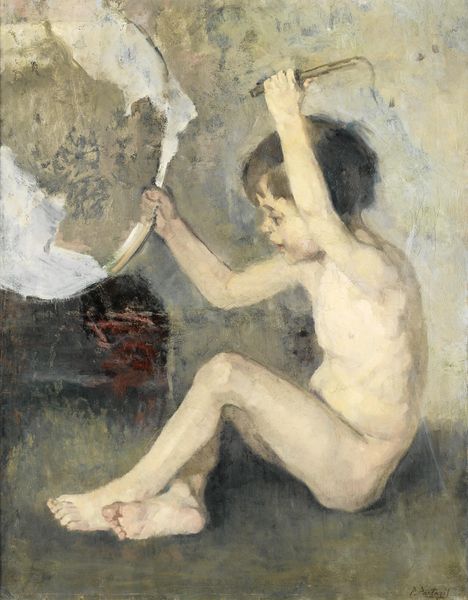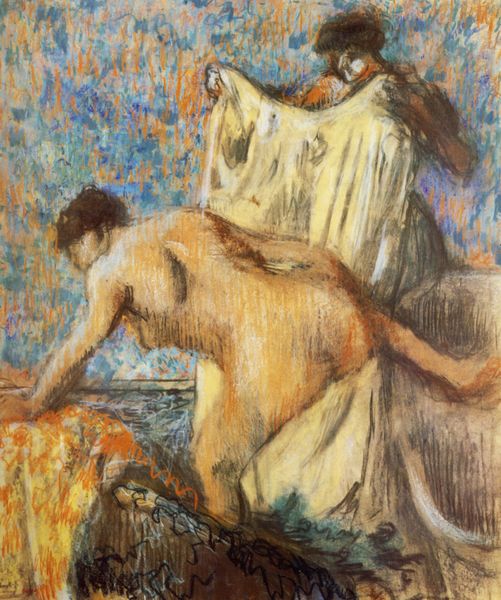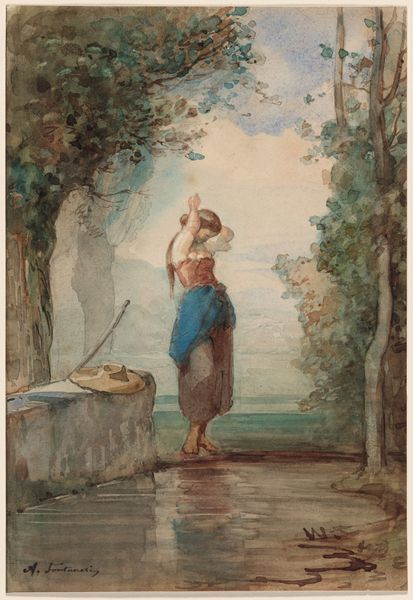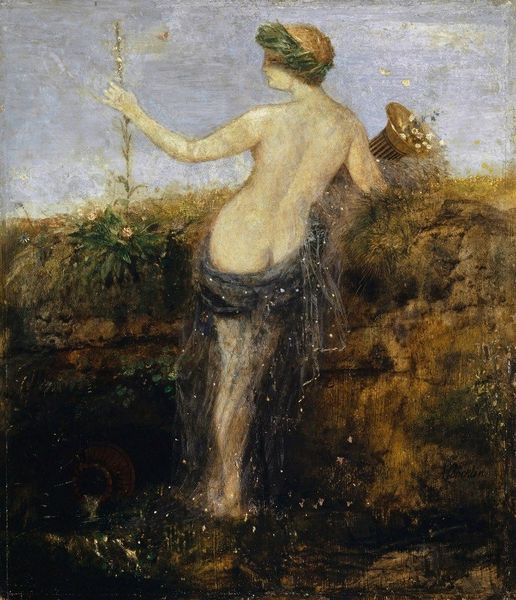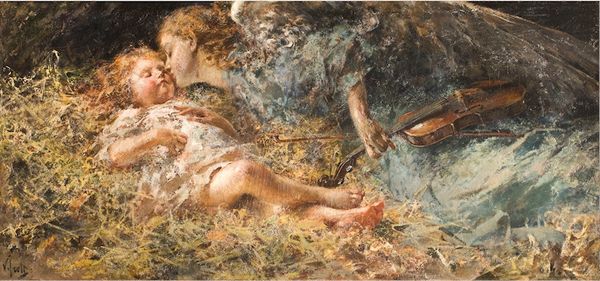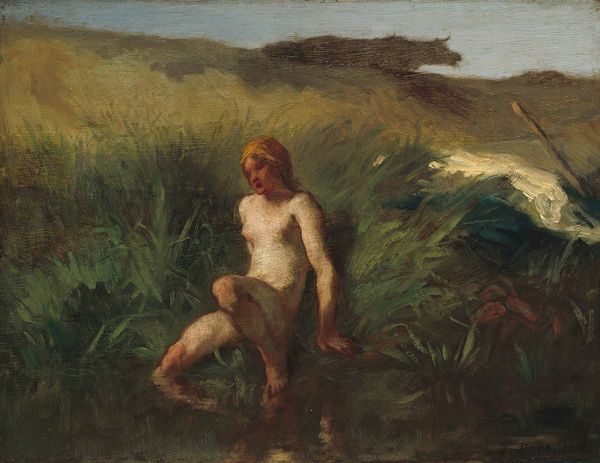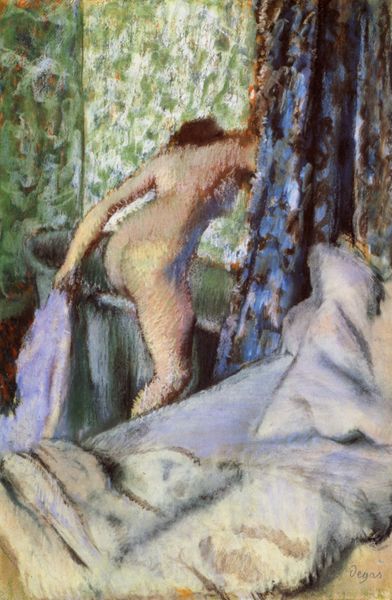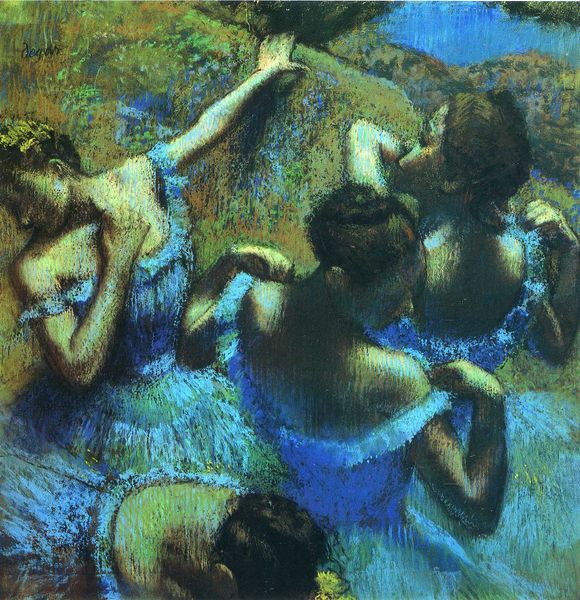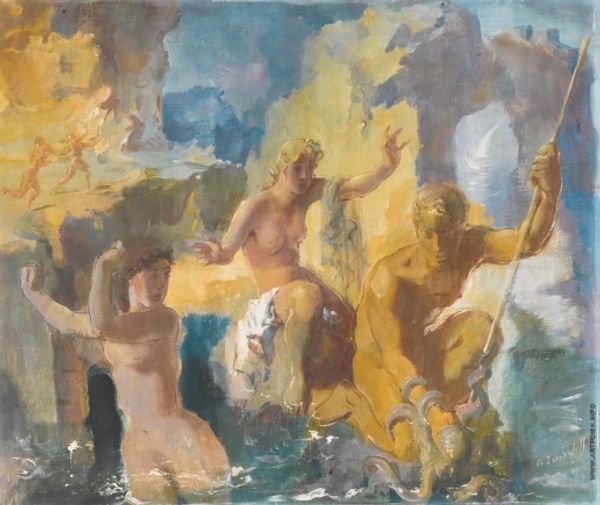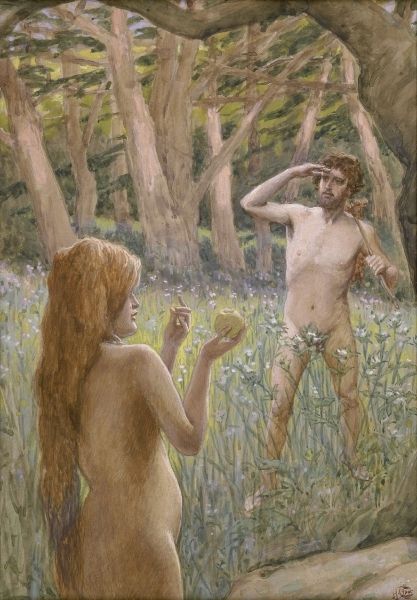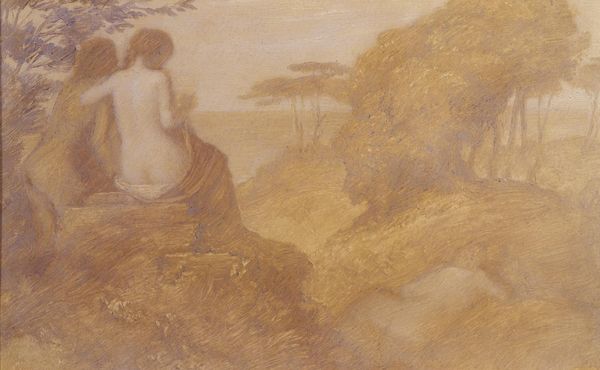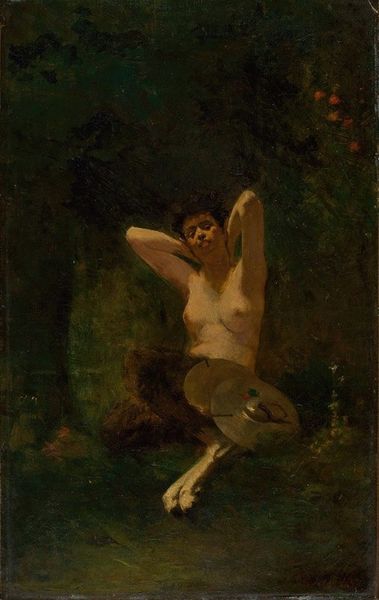
painting, watercolor
#
portrait
#
painting
#
landscape
#
oil painting
#
watercolor
#
romanticism
#
genre-painting
Copyright: Public domain
Editor: This is "Idylle" by Mariano Fortuny Marsal, and though it isn’t explicitly dated, we believe it’s from around 1868. It seems to be watercolor and oil on paper. There's this striking image of a shepherd boy playing what looks like a double flute next to a resting sheep. There's something almost dreamlike about the soft lines and the way the figures blend into the landscape. What stands out to you most? Curator: What immediately strikes me is the construction of an idealized, almost pastoral fantasy that intentionally overlooks the realities of labour and social inequality of the period. This idyllic scene contrasts sharply with the period's sociopolitical realities, such as rural poverty. Consider the artistic license taken here – a shepherd boy who seems disconnected from the labor usually linked to his position. Where do you think this artistic decision might fit within the wider scope of Romanticism? Editor: I suppose it's meant to evoke a sense of escape or longing for a simpler time? But you're right, it definitely glosses over the struggles someone in that position would have faced. Curator: Exactly! And it is precisely that selective vision that’s fascinating. It reveals a certain kind of privileged perspective of the artist. We could even link this romanticized image to Orientalist tropes of the time, since Fortuny spent much time in Morocco. The image seems less concerned with reflecting a particular lived reality and more concerned with a fabricated notion of timelessness, erasing any markers of contemporary existence. Does thinking about the power structures implicit in this work change your perception of it? Editor: It does. I hadn't considered the historical and cultural context that deeply. It’s a good reminder that art isn't created in a vacuum, and there can be hidden meanings behind beautiful images. Curator: Precisely. By examining art through these lenses, we expose not just aesthetic choices but also ideological frameworks. Hopefully this reveals some of the work's intended – and perhaps unintended – commentary on identity and society.
Comments
No comments
Be the first to comment and join the conversation on the ultimate creative platform.

